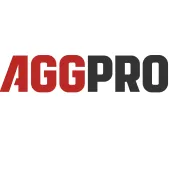Our People - Our Greatest Resource

First published in the March 2014 issue of Quarry Management
Implications and options for an organization aiming to fulfil its people potential
By Jonathan Hurley, business development manager, Volvo Construction Equipment
In 2013, the theme for the Institute of Quarrying’s annual conference was ‘Our People – our greatest resource’ – a laudable concept, but what does it really mean and what are the implications and options for an organization aiming to fulfil its people potential?
The Sunday Times 100 Best Companies to Work For, an annual ranking of the cream of Britain’s motivated workforces, provides some indication as to which organizations are currently most focused and effective in this field. Dominic O’Connell1, business editor of The Sunday Times, comments that ‘The levels of workplace engagement required to make the grade as a ‘best company to work for’ are high, but bring significant business benefits. The firms included in our lists leverage their employee engagement into solid success, both in the UK and on the global stage.’
In a similar vein, Anne M. Mulcahy2 (CEO of the Xerox Corporation from 2001 to 2009) strongly echoed the sentiments conveyed by the conference theme and Mr O’Connell when she suggested that ‘Employees are a company’s greatest asset – they’re your competitive advantage. You want to attract and retain the best; provide them with encouragement, stimulus, and make them feel that they are an integral part of the company’s mission.’
The notions discussed above: those of workplace engagement; business benefits and competitive advantage; staff encouragement and integration, provide an initial framework upon which an examination of people as a company’s greatest asset may be based.
It is the notion of workplace (employee) engagement which is the most influential of these when considering business benefits and competitive advantage as wanted outcomes. William H. Kahn3 was arguably one of the earliest writers to attempt to define personal engagement (or disengagement), which he did in terms of the degree to which an individual is prepared to employ and express (or defend) their ‘preferred self’ within a professional role. He suggested that it is this which promotes (or limits) an employee’s substantial participation, intellectual attentiveness and vicarious relationship with others within their role and thus similarly affects their performance.
Kahn3 went on to describe three distinct psychological conditions which constantly affect levels of engagement (or disengagement) when an employee is presented with a particular task or role:
- Meaningfulness – the return on investment of one’s ‘preferred self’, the feeling of being considered to be worthwhile, valued and valuable within the organization.
- Safety – the ability to show and employ one’s ‘preferred self’ without risk of undesirable results regarding self-image, status or career. The sense that a work situation is trustworthy, secure and predictable and that objectives are clear.
- Availability – the possession of the resources (physical, emotional and psychological) essential for the investment of one’s ‘preferred self’ in job accomplishment.
Kahn3 then defines a variety of individual and organizational traits which he considers to be critical to the development and support of the above conditions necessary for employee engagement and performance (see table 1).
It could very well be said that those traits defined in table 1 effectively represent a rare illustration of the notoriously informal and imprecise concept of the psychological contract. In much the same way as the breaking of the psychological contract, the non-fulfilment of the traits identified above, by either party, will result in employee disengagement and a corresponding sub-optimization of role performance. So, in summary, employee engagement is the degree to which an individual is prepared to invest their ‘whole self’ in a task or role, predicated upon the perceived nature and status of the psychological contract existing between the individual and the organization. Furthermore, the psychological contract could be said to be somewhat illustrated and defined by the traits in table 1.
However, the aim of this paper is not merely to inform on the meaning of engagement but also the implications for organizations today. In order to achieve this objective, it is useful to provide answers to some fundamental questions :
- What is the current status of employee engagement within the UK market? Is there an issue?
- Why is this important to an organization? What impact can engagement have on competitiveness?
- Why is engagement important on an individual basis? What is the impact of disengagement?
The Chartered Institute of Personnel and Development4 regularly provides an ‘Employee Outlook’ report which includes as one of its key metrics an indication of the level of employee engagement overall, and in a series of market sectors. Currently the news is not great (see fig. 1).
If the overall engagement index is presented alone, then the trend is distinct (see fig. 2).
The data suggest that only about one in three employees in the public and private sectors are engaged in their current role, and also that the situation is deteriorating.
So, why is this important, and can an engaged workforce enhance competitiveness as suggested by Ms Mulcahy? Research carried out by Gallup5 in 152 companies in 2012 would certainly suggest that it can (see fig. 3).
The research compares those organizations in the upper quartile for staff engagement with those in the lower quartile, and provides an indication of the differential between them based upon several key competitive criteria. In summary, those companies with greater workforce engagement demonstrated significantly higher profitability, productivity and customer satisfaction, and lower defect rates, accidents, shrinkage, staff turnover and absenteeism.
But what of the disengaged individual: how damaging can it be to feel that your role has no meaning or to feel insecure due to a poor relationship with a line manager? In 2013 Gallup6 carried out two pieces of related research in order to provide answers to these questions. First, they asked whether or not people would continue to work if they won enough money not to do so. The purpose of this was to provide an illustration of the strength of the work ethic prevalent within this particular market. Subsequently, they also asked which of these individuals had ‘…experienced enjoyment, smiled or laughed a lot, were treated with respect, learned something interesting, or experienced happiness the day before the survey’, a personal condition they characterized as being that of ‘Thriving’. While the results are not startling, they should be thought-provoking for line managers in today’s organizations.
As can be seen from figure 4, the results from the initial research suggests that, in this particular market, approximately 70% of people would continue to work, despite having the financial assets not to do so. The purpose of this part of the overall research is to place the subsequent findings in context regarding the prevalent work ethic within the market.
The final phase of the research focuses on the proportion of particular sections of the workforce, predicated upon engagement/ employment status, who would consider themselves to be ‘Thriving’, based upon the definition presented in the text above. It suggests that, despite the relatively powerful work ethic, individuals without employment consider themselves as ‘Thriving’ to greater degree than those in employment but disengaged (see fig. 5). Put simply, they would rather be unemployed than disengaged. The Institution of Occupational Safety and Health suggests a link between the psychological contract, employee engagement and well-being. With the latter being currently identified as a key component of workplace stress, poor employee engagement can be said to be not only bad for business, but also manifestly bad for one’s mental health.
So, what is the antidote to declining employee engagement? The Sunday Times 100 Best Companies to Work For utilizes a set of eight criteria against which applicant companies are assessed by their staff in order to determine levels of engagement (see table 2).
While these criteria have undoubtedly been streamlined and updated, particularly in the Corporate Social Responsibility and Employee Well-being arenas, the similarity to those traits identified by Kahn in the 1990s is evident. The 2009 MacLeod Report7, Engaging for Success, attributed 80% of variation in employee engagement to line-manager relationship. Correspondingly, the Sunday Times survey also attributes 70% of the motives for leaving an employer to the same cause. With these stark warnings in mind, it would appear evident that the criteria ‘My Manager’ and ‘Leadership’ from the Sunday Times inventory is a logical place to start.
At the heart of true employee engagement lies the concept of what William H. Kahn3 defined as ‘…the simultaneous employment and expression of a person’s ‘preferred self’ in task behaviors that promote connections to work and to others, personal presence (physical, cognitive, and emotional), and active, full role performances’. That is to say that, under the right conditions, an employee employs their true self and energies to a task or role rather than just ‘turning up’. Robert Goffee and Gareth Jones8 denote a similar construct as being the core of one of the newest areas of leadership research when they submit that ‘We cannot be freely ourselves without an overarching set of moral values’. They are referring to Authentic Leadership: focused upon whether leadership is genuine and real and, it is proposed, predicated upon people’s contemporary need for ethical, trustworthy leadership following such events as 9/11, corporate scandals such as those at WorldCom and Enron, and most of all the massive failures in leadership in the banking industry. This, it could well be said, is entirely indicative of Kahn’s3 necessary condition of Safety for employee engagement, of which Management Style and Process are powerfully influencing traits.
Authentic Leadership can be defined from three distinct perspectives: the intrapersonal, the developmental and the interpersonal. The intrapersonal approach focuses on the leader him/herself in that it is concerned with self-knowledge, self-regulation and self-concept. Authentic leaders will lead based upon their own convictions which are influenced heavily by their own life experiences and the meaning the leader attaches to these, ie:
- Authentic leaders exhibit genuine leadership.
- Authentic leaders lead from conviction.
- Authentic leaders are original, not copies.
- Authentic leaders base their actions on the values.
The developmental approach to defining Authentic Leadership proposes that it is something that can be nurtured in a leader, as opposed to being considered as a fixed trait. It is considered to be a pattern of behaviour which develops over time based upon the leader’s positive psychological qualities and strong ethics. This hypothesis for authentic leadership relies on four related components:
- self-awareness;
- internalized moral perspective;
- balanced processing;
- relational transparency.
While this developmental perspective advocates that a leader may learn and develop these behaviours over time, it also implies that the potential for authentic leadership is born, not made.
The third, interpersonal approach relates to the concept that authentic leadership is as much a product of both leader and follower behaviour as it is that of the leader alone. That it is emergent from the interactions between leader and follower(s) and that it is a reciprocal process: leaders affect followers and followers affect leaders. In this way, Authentic Leadership requires buy-in from the followers in order that they identify with the leader’s values.
Bill George9 provides a model wherein elements of both the intrapersonal and interpersonal perspectives on Authentic Leadership may be identified (see fig. 6).
Daniel Goleman10 takes a similar stance in his book ‘The New Leaders’ where he describes primal leadership as being resonant with followers. Goleman10 talks of employees experiencing a ‘…mutual comfort level…’ when they are the subject of resonant leadership, a concept which is in itself resonant with Kahn’s3 prerequisite condition of Safety for employee engagement. Goleman10 goes on to contend that the resonant leader must be an emotionally intelligent leader, the domains and competencies of which are not entirely inconsistent with the intra- and inter- personal perspectives on Authentic Leadership discussed earlier (see table 3).
While Authentic Leadership has much to endorse it as an approach to developing employee engagement –
- it fulfils the need for honourable leadership following a variety of distinct examples of its antithesis;
- it provides expansive strategies for those managers wishing to become authentic leaders;
- it has an explicit moral dimension: doing what is ‘right’ and ‘good’ for followers and for society;
- it can be developed over time: everyone can learn to be more authentic and there are potentially many ways to do this;
– it is still in its formative stages, with many of its fundamental concepts, such as the moral component and the inclusion of psychological capacities, still not fully understood or validated.
Also, a cautionary note before the business world becomes inundated with emotionally intelligent, authentic and resonant bunglers. Goffee and Jones8 pointedly maintain that pitfalls await those who do not balance these leadership characteristics with intrinsic skills, such as project, change and performance management (see fig. 7).
This pitfall is termed the ‘Maverick’: they may have a strong sense of who they are, what made them, and what they stand for, but they lack the skills to deploy their attributes. Not a comfortable place to be.
To conclude, are our people our greatest asset with the potential to bring tangible competitive advantage? When effectively led and provided with opportunities for personal growth, within a meaningful environment, by a company whose values they share and are proud to work with…Certainly!
References
- O’CONNELL, D.: ‘The message is clear: support your staff and they will support you’, The Sunday Times [internet], 14 March 2013. Available at: www.thesundaytimes.co.uk/sto/public/business/ article1229568.ece
- MULCAHY, A.M., n.d. ‘Brainy quote’ [online]. Available at: www.brainyquote.com/quotes/ quotes/a/annemmulc424886.html
- KAHN, W.A.: ‘Psychological conditions of personal engagement and disengagement at work’, 1990, Academy of Management Journal, 33 (4), pp.692-724.
- The Chartered Institute of Personnel and Development, ‘Employee Outlook’ [online], 2013 (updated 2014). Available at: www.cipd.co.uk/ research/_employeoutlook
- Gallup, Inc.: ‘Employee Engagement: What’s Your Engagement Ratio?’ [online], 2010 (updated 8 February 2014). Available at: www.gallup.com/ strategicconsulting/121535/Employee-Engagement-Overview-Brochure.aspx
- NINK, M.: ‘Where disengagement at work is worse than joblessness’ [online], 2013 (updated 30 July 2013). Available at: businessjournal. gallup.com/content/163700/gbj-disengagement-worse-engagement-marco-nink.aspx? utm_source=email&utm_medium=082013&utm_content=morelink&utm_campaign=newsletter
- MACLEOD, D., & N. CLARKE: ‘Engaging for success: enhancing performance through employee engagement’ [internet], 2009, London: Department for Business, Innovation and Skills (Crown copyright). Available at: www.bis.gov.uk/files/file52215.pdf
- GOFFEE, R., & G. JONES: ‘Why should anyone be led by you? what it takes to be an authentic leader’, 2006, Boston (MA): Harvard Business School Press.
- GEORGE, B.: ‘Authentic leadership: rediscovering the secrets to creating lasting value’, 2003, San Francisco (CA): Jossey Bass.
- GOLEMAN, D., BOYATZIS, R., & A. MCKEE: ‘The new leaders: transforming the art of leadership into the science of results’, 2002, London: Little, Brown Book Group.
-
Subscribe to Quarry Management, the monthly journal for the mineral products industry, to read articles before they appear on Agg-Net








